Request A Car Rental
Travelling to Mongolia and need a car rental plus extra equipments?
The Traditional Mongolian Yurt: History and Uses
Mongolian yurts, also known as gers, have been an integral part of the nomadic lifestyle for thousands of years. These portable, round-shaped dwellings are not only a testament to the ingenuity of ancient Central Asian cultures, but they also hold deep spiritual significance. In this article, we will delve into the fascinating history, design, and symbolism of these traditional structures, the Mongolian yurt, while exploring their modern adaptations and uses in today’s world.
Key Takeaways
- The traditional Mongolian yurt has evolved over centuries and is an important part of the intangible cultural heritage, symbolizing the universe.
- It consists of various components that allow it to be easily assembled and disassembled, providing insulation, support and ventilation in harsh weather conditions.
- Yurts have been adapted for modern uses such as eco-friendly housing while still maintaining their charm and character. They offer a unique experience connecting with local culture through activities like glamping or staying with nomadic families.
The Origins and Evolution of Mongolian Yurts
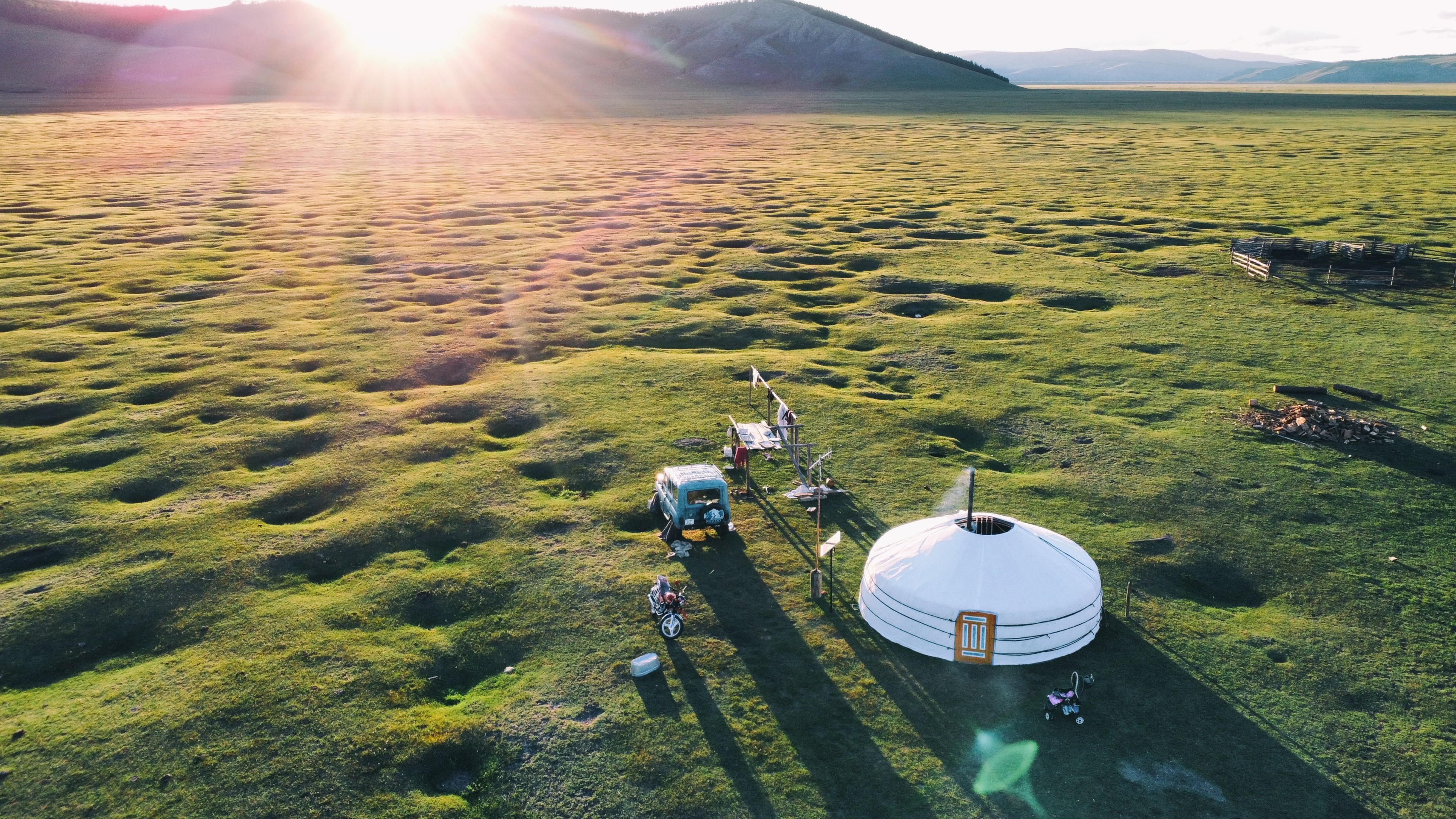
For at least two and a half thousand years, yurts have served as a notable aspect of Central Asian life, providing the region’s central asian nomads with a place to dwell. The earliest documented reference to a yurt, a round tent covered with skins or felt, being utilized as a dwelling is found in the writings of the ancient Greek historian Herodotus. To facilitate movement without needing to dismantle and rebuild the wooden structure, yurts were mounted on large yak-drawn carts. The Scythians were a nomadic nation inhabiting the northern Black Sea and Central Asian region between 600 BC and AD 300. They built yurts, typical for central Asian cultures, as their dwelling place.
Over the centuries, the design of these traditional dwellings evolved to accommodate the needs of the nomadic people. In the 13th century, the walls of large yurts were composed of woven rods, covering the roof of the house at the apex, and draped with white felt. The shangyrak, the wooden crown of the yurt, became a significant element in old Kazakh communities, often being passed from father to son upon the father’s passing.
Today, modern yurts retain some of the traditional features while incorporating new materials and designs to suit various purposes and climates. The concept of introduced yurts has played a significant role in this evolution.
Nomadic Lifestyle and Yurt Design
Yurts were shaped by the nomadic lifestyle of Mongolian people, resulting in a design that is both portable and easy to assemble. This design allowed nomads to relocate their dwellings quickly and seamlessly, as they pursued their herds and resources. Constructed from lightweight materials, yurts feature:
- A collapsible frame that can be quickly and easily assembled or disassembled
- A circular shape with a domed roof
- A lattice wall structure covered with felt or canvas
These features make yurts ideal for nomadic residents who often need to move their homes.
Modern yurts have adapted the traditional design to suit various purposes and climates. While still retaining the portability and ease of assembly, modern yurts often incorporate advanced materials and technologies to improve insulation, durability, and comfort. Despite these changes, the connection to the nomadic lifestyle and Mongolian culture remains strong and is a key aspect of the yurt’s enduring appeal.
Intangible Cultural Heritage
Regarded as an intangible cultural heritage, the unique design and symbolism of Mongolian yurts have been passed down through generations. These traditional dwellings are a source of pride and identity for the Mongolian people and represent an essential aspect of their heritage. The knowledge and skills associated with yurt construction are imparted from parents to children, ensuring that the distinctive design and symbolism of Mongolian yurts are safeguarded and transmitted through generations.
Mongolian yurts are traditionally believed to represent the universe, with the circular shape symbolizing the cosmic connections between the sky, earth, and the four cardinal directions. The fire and hearth in the center of the yurt are also believed to be a representation of the sun and moon, and are seen as a source of spiritual energy and protection. This rich symbolism and spiritual significance add to the allure of these unique dwellings and the cultural heritage they represent.
Anatomy of a Traditional Mongolian Yurt (Ger)
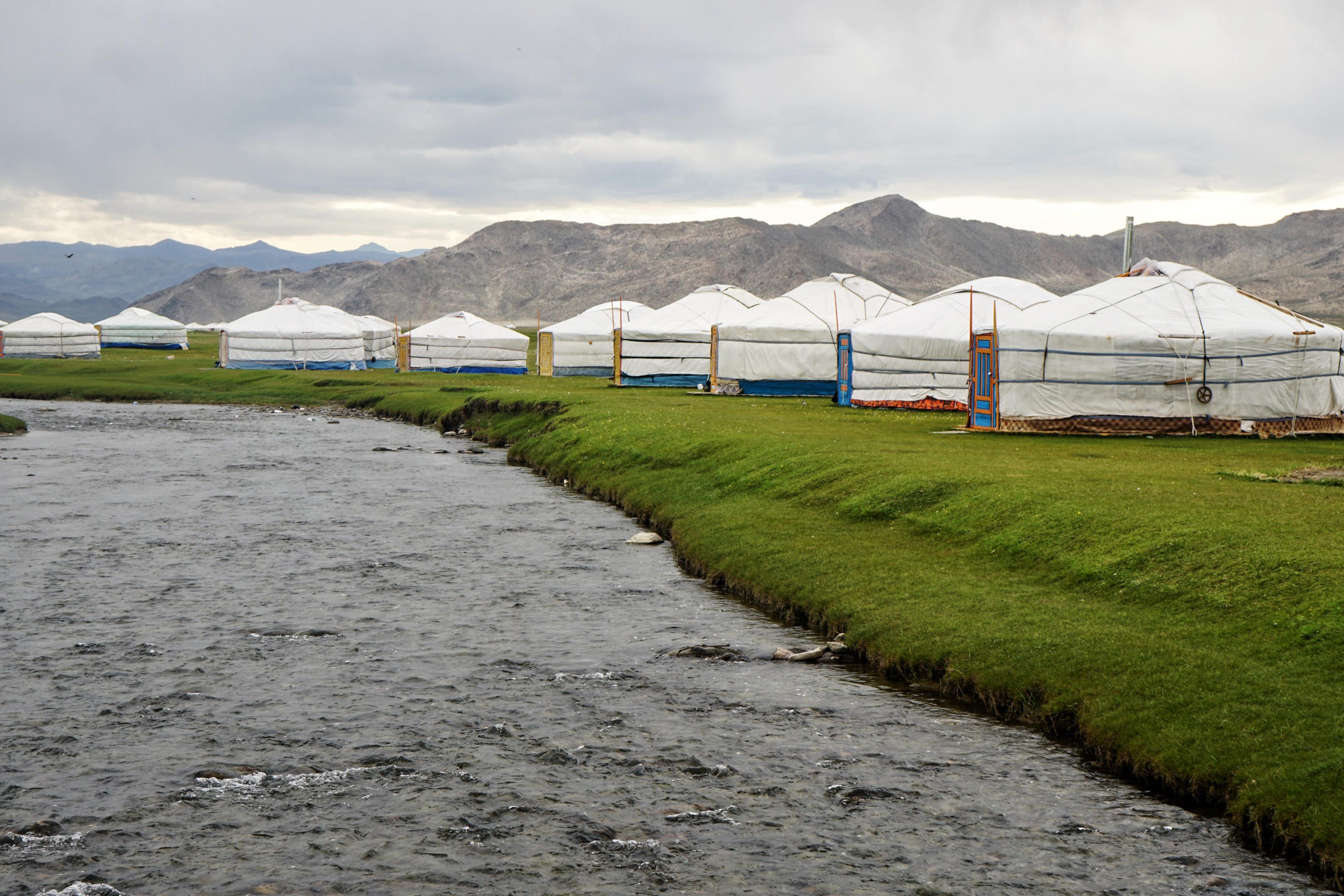
A traditional Mongolian yurt, or ger, is composed of:
- An expanding wooden circular frame
- A felt cover constructed from the wool of the flocks of sheep accompanying the pastoralists
- Angled, curved, and interconnected wooden or bamboo pieces for walls
- A door frame
- Ribs
- A wheel, which acts as the roof and may be steam bent to enable flexibility in movements to which the yurt is susceptible
The unique design of the yurt allows it to be easily assembled and disassembled, making it an ideal dwelling for the nomadic lifestyle.
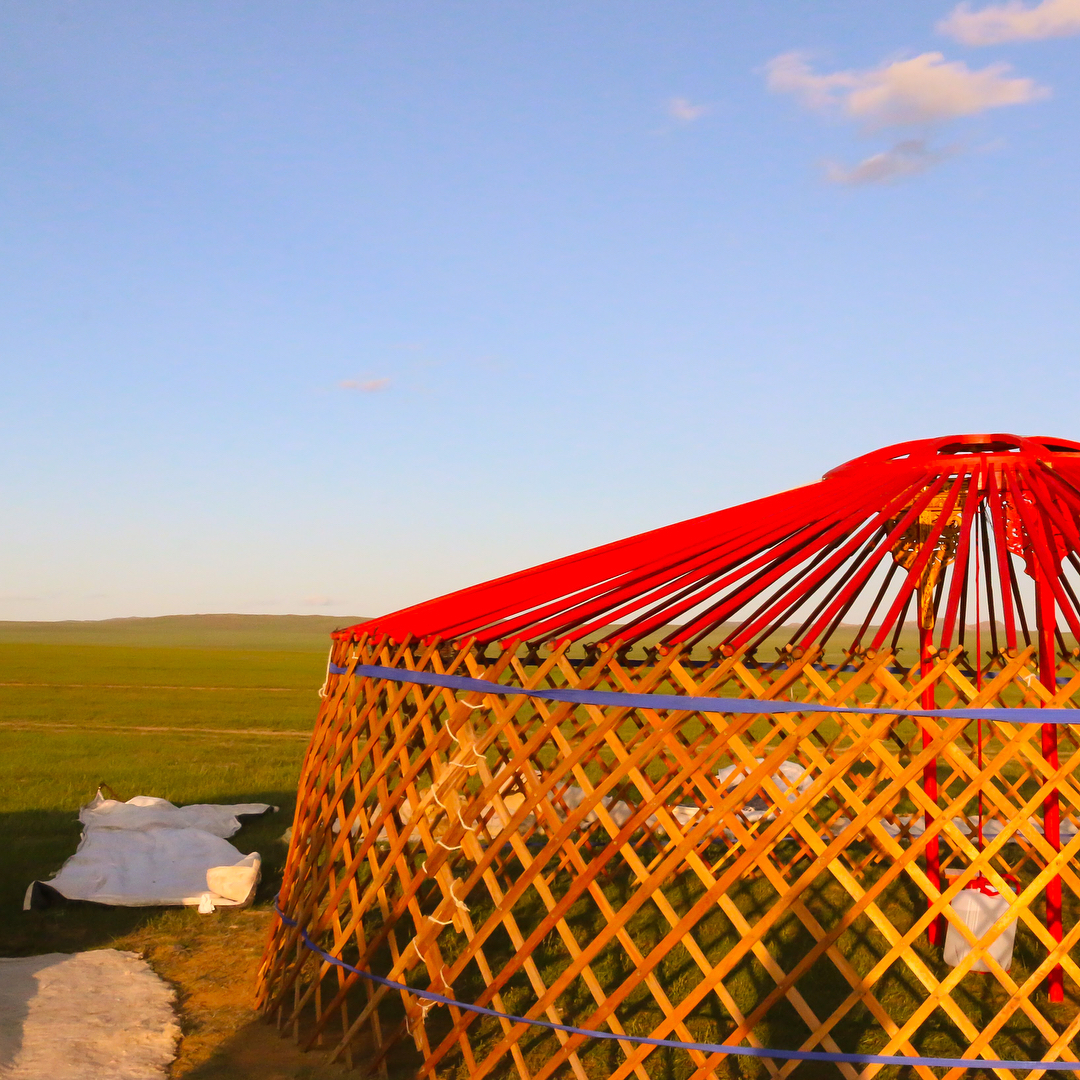
The traditional yurt is designed to withstand the harsh weather conditions of Central Asia, such as strong winds, dry summers, and cold winters.
- The felt cover provides insulation
- The lattice walls offer support and ventilation
- The central stove serves as the core of family life and is employed for culinary purposes and heating during the winter.
Yurts have been a vital part of Mongolian culture for centuries, particularly Mongolia, and their distinctive design continues to captivate people around the world.
Structural Components
The structural components of a yurt include:
- A wooden frame, crafted from lightweight materials such as wood or bamboo, gives the yurt its structure and support.
- Mesh walls, composed of a flexible angled assembly or latticework, offer insulation and ventilation.
- A central crown, or wheel, serves to provide support for the roof poles and helps to ensure the yurt’s stability.
Assembling these components involves a series of steps, with the wooden frame, which serves as the foundation upon which the yurt is built, resembling a wooden floor in its structure.
One of the most distinctive features of a yurt is its circular shape, which is achieved through the use of a series of wooden roof poles that radiate outward from the central crown. These wooden poles, referred to as uni, create a strong and stable structure capable of withstanding high winds and heavy snow loads. The roof is then covered with a felt or canvas material, which provides insulation and protection from the elements.
Insulation and Coverings
Insulation and coverings for yurts are essential for protecting the inhabitants from the elements and maintaining a comfortable living environment. Traditional yurts utilize felt made from sheep wool as the primary insulation material, which is both effective at retaining heat and breathable, allowing for proper ventilation. The felt is then covered with an outer layer of canvas or animal skins, providing additional protection from wind, rain, and snow.
In modern yurts, additional materials such as radiant insulation or waterproof coatings may be used to enhance the yurt’s performance in various climates. However, the use of natural materials like felt and canvas remains a popular choice due to their sustainability and connection to the traditional Mongolian culture.
Proper care and maintenance of these materials, such as regular cleaning and the application of waterproof coatings, can extend the lifespan of the yurt and ensure its continued comfort and functionality.
Symbolism and Spiritual Significance

Mongolian yurts hold deep symbolism and spiritual significance, with many aspects of their design reflecting the beliefs and cosmogony of the Mongolian people. The circular shape of the yurt is symbolic of the sky, while the central pillars represent the cosmic axis that links earth and heaven.
The fire and hearth, situated at the center of the yurt, are believed to be a representation of the sun and moon and are seen as a source of spiritual energy and protection. This rich symbolism imbues the yurt with a sacred quality, making it not only a practical dwelling but also a meaningful space for meditation and spiritual practice.
Circular Shape and Cosmic Connections
The circular shape of yurts represents the sky and the cosmic connections between the earth and the heavens. This symbolism is deeply rooted in the spiritual beliefs of the Mongolian people, particularly in the practices of Shamanism and Tengrism that preceded Buddhism. The circular design not only reflects the cosmogony of the Mongolian people, but also creates a sense of unity and harmony within the living space.
In addition to the circular shape, the central pillars of a yurt symbolize the cosmic axis, which connects the earth and the heavens and serves as the basis for all spiritual practice. This central axis is often adorned with various patterns and symbols, such as the ulzii pattern, which is believed to represent longevity and joy, or the continuous hammer or walking pattern (alkhan khee), symbolizing unending strength and perpetual motion. These intricate patterns further emphasize the spiritual significance of the yurt and its connection to the cosmos.
Fire and Hearth
Fire holds a significant place in Mongolian yurts, both as a practical necessity for cooking and heating and as a symbol of spiritual energy and protection. The central stove, often the first element to be installed during the assembly of a yurt, is believed to represent the sun and moon, providing warmth and light to the inhabitants.
In Mongolian culture, there is a belief that “a misfortune circle must always be between two circles of happiness,” which is applied to the fabrication of the stove, traditionally composed of three circles of metal. This spiritual connection to fire and the heart imbues the yurt with a sense of sacredness, making it a focal point for family life and spiritual practice.
Modern Adaptations and Uses of Yurts
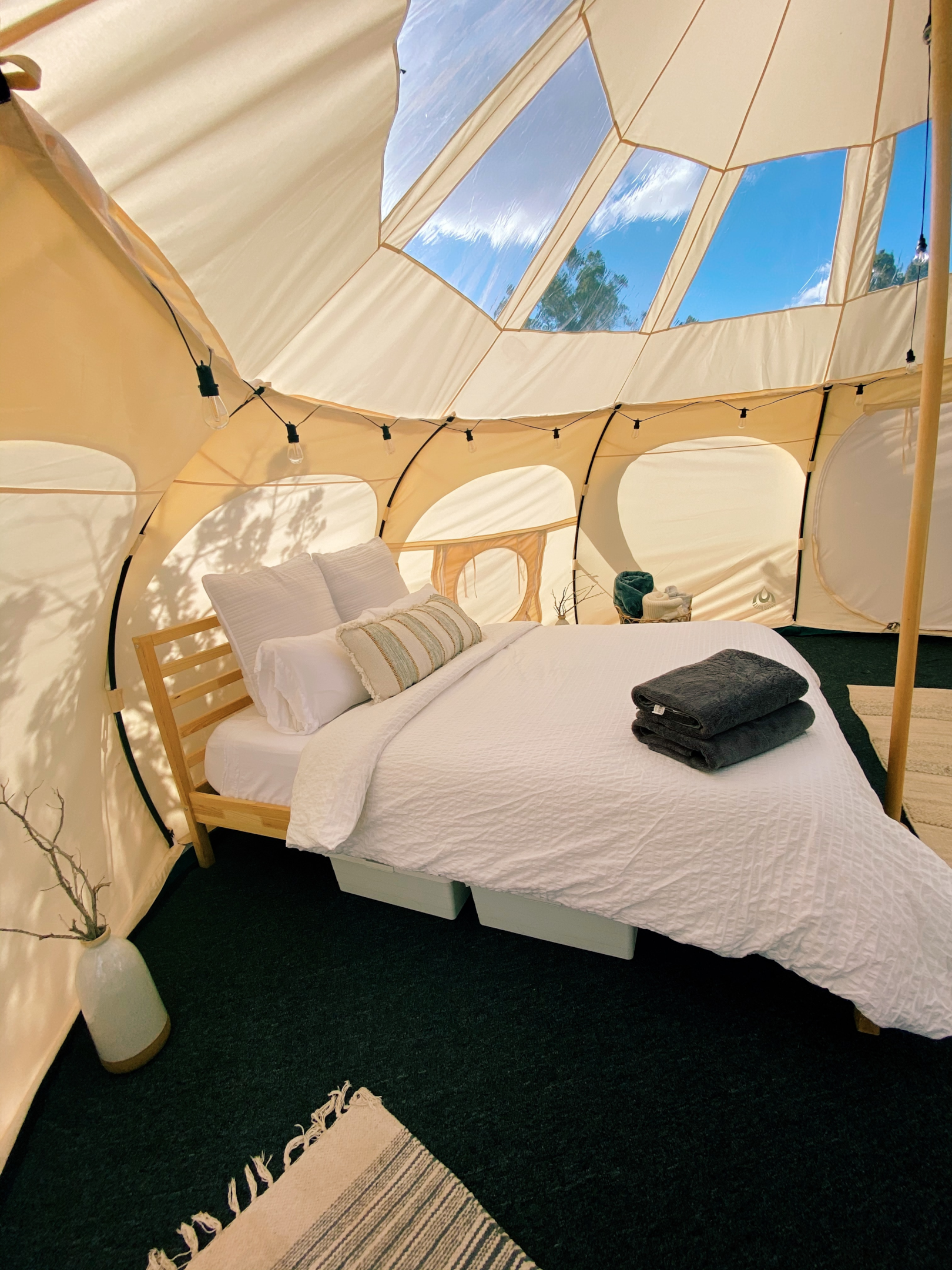
While traditional Mongolian yurts continue to be used by nomadic people in rural areas, the yurt has also found a place in modern society, with adaptations and innovations allowing for a variety of uses beyond its original purpose as a portable dwelling. From eco-friendly housing to glamping accommodations, yurts have been embraced by those seeking a unique and sustainable alternative to conventional structures. These modern adaptations often incorporate advanced materials and technologies, such as metal framing, plastics, or radiant insulation, while still retaining the charm and character of the traditional yurt.
Yurts have also become popular in the tourism and recreation sectors, with many people drawn to the idea of staying in a yurt for a unique and immersive cultural experience. Yurt accommodations can be found in campgrounds, national parks, and other outdoor destinations, offering a comfortable and eco-friendly lodging option for visitors. Additionally, yurts are increasingly being used as event venues, retreat centers, and meditation spaces, showcasing the versatility and enduring appeal of this ancient structure.
Westernization and Material Innovations
As yurts have gained popularity in the West, they have been adapted to suit different needs and climates. Modifications often include:
- the use of advanced materials, such as metal framing or plastics
- varying designs for improved insulation and durability
- some yurts even feature a plexiglass dome as a modern twist on the traditional central opening, allowing for more natural light while maintaining the unique aesthetic of the yurt.
In Europe, a closer approximation to the Mongolian and Central Asian yurt is manufactured in several countries, utilizing local hardwood and often modified for a humid climate with steeper roof profiles and waterproof canvas. These adaptations demonstrate the versatility of the yurt design, which can be tailored to suit a variety of needs and environmental conditions while preserving its connection to the traditional nomadic lifestyle.
Yurts in Tourism and Recreation
With their unique and immersive experience, yurts have carved out a significant niche in the tourism and recreation sectors, providing an alternative to conventional accommodations for travelers. Campgrounds, ski resorts, and other outdoor destinations widely use modernized versions of traditional Mongolian yurts. These yurts are equipped with insulation, waterproofing, and modern amenities for tourists to enjoy an authentic cultural experience in a comfortable setting.
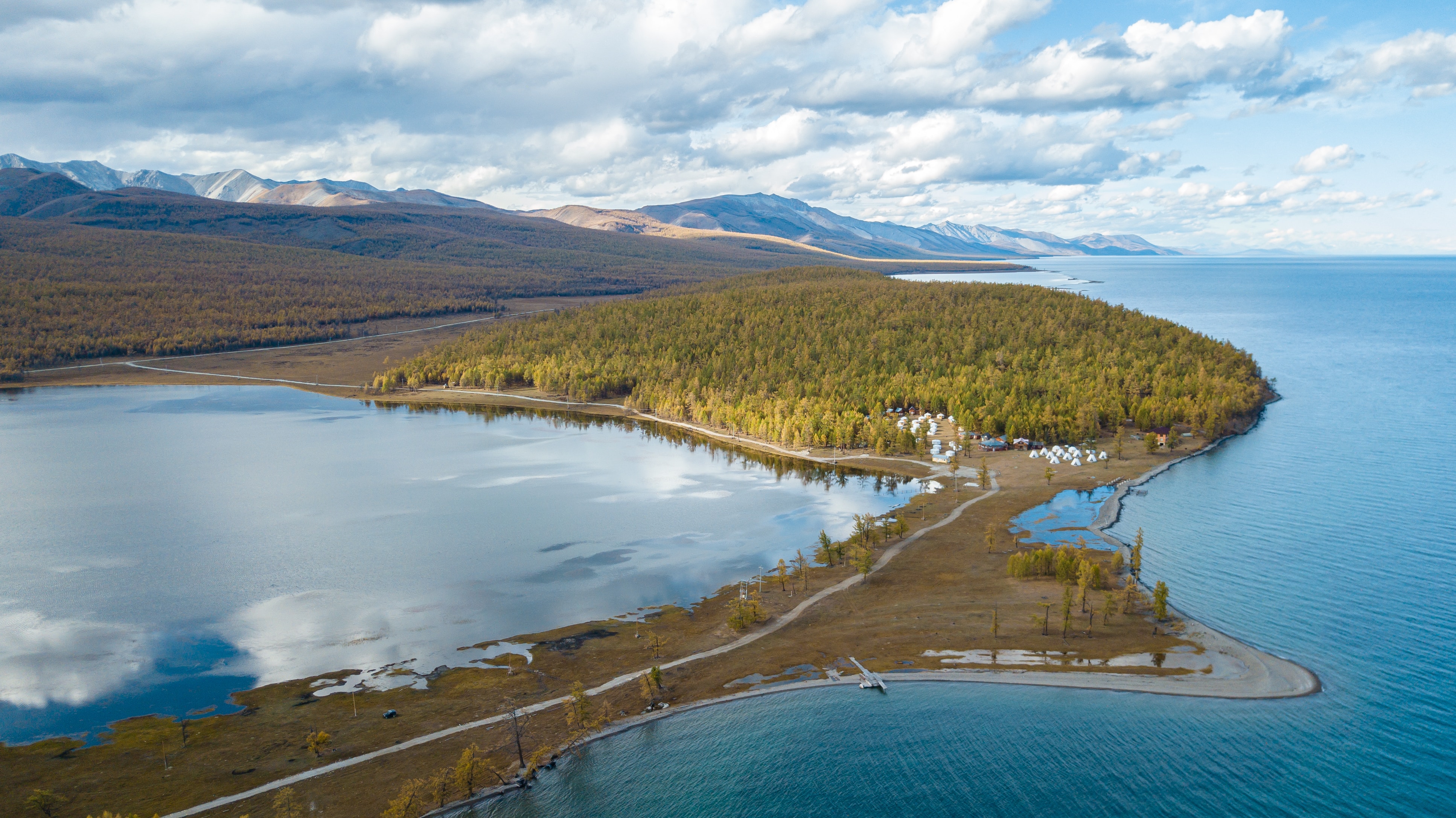
In addition to their use as accommodations, yurts also serve as event venues, retreat centers, and meditation spaces, offering a serene and distinctive setting for gatherings and personal reflection. The appeal of yurts in tourism and recreation lies in their ability to provide a connection to nature, history, and culture, while still offering the comforts and conveniences of modern living. This unique blend of tradition and innovation ensures that yurts will continue to captivate and inspire travelers for years to come.
Building and Maintaining a Mongolian Yurt
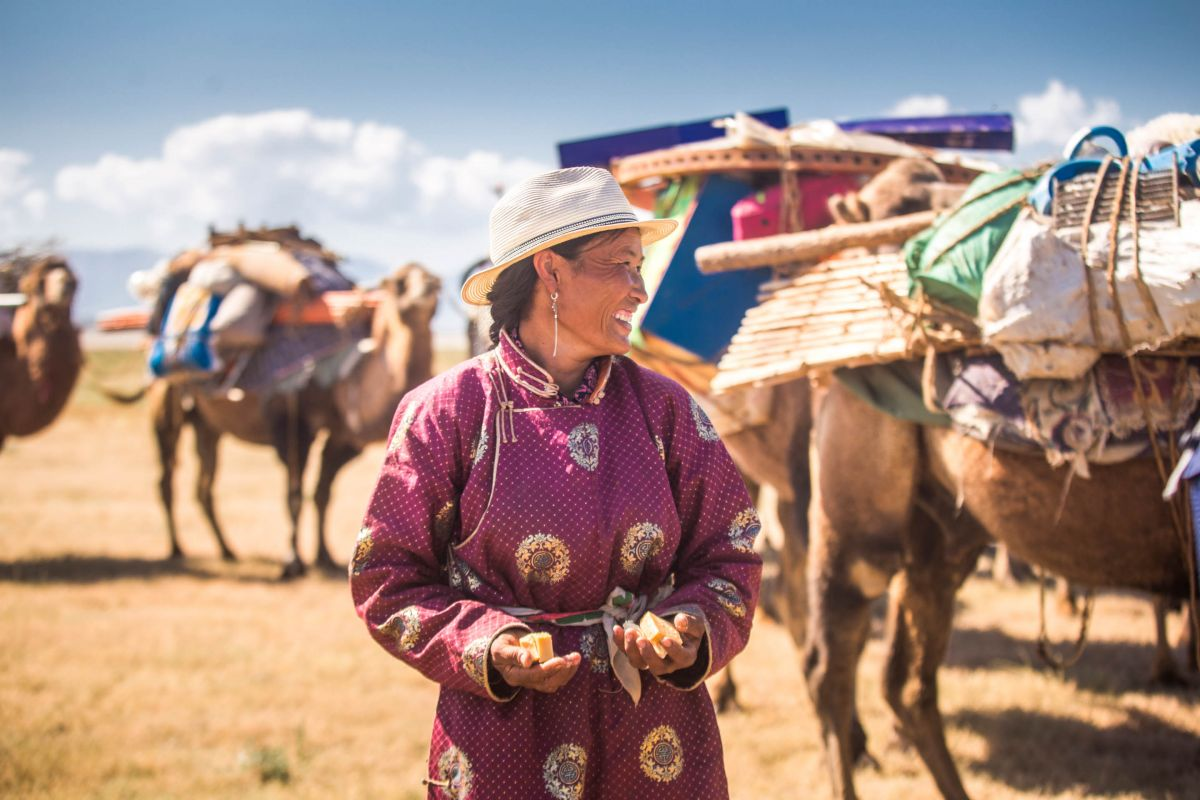
The construction and maintenance of a Mongolian yurt is a labor of love, necessitating skill, patience, and a reverence for the traditional craftsmanship inherited over generations. The process involves a series of steps, including:
- Preparing the foundation
- Assembling the wooden frame
- Installing the door frame and roof poles
- Attaching the roof ring
- Completing the interior with insulation and coverings
Proper care and maintenance of a yurt, such as regular cleaning, adequate ventilation, and protection from the elements, can ensure its longevity and continued comfort for its inhabitants.
Assembly Process
The assembly process for a traditional yurt typically includes the following steps:
- Prepare the foundation.
- Lay out the lattice wall.
- Install the door frame.
- Raise the roof poles.
- Attach the roof ring.
- Install the roof covering.
- Secure the roof covering.
- Install the door and windows.
- Complete the interior with insulation and furnishings.
The time it takes to complete these steps can vary depending on the size and complexity of the yurt, but it generally takes between 30 minutes and 3 hours to assemble or disassemble a yurt.
While the assembly process may seem complex, the design of the yurt is such that it can be easily dismantled and rebuilt, making it an ideal dwelling for the nomadic lifestyle. With practice and the right tools, assembling a yurt can be a rewarding and satisfying experience, allowing one to appreciate the craftsmanship and skill that has been passed down through generations of Mongolian nomads.
Care and Maintenance
Proper care and maintenance of a yurt can extend its lifespan and ensure its continued comfort and functionality. Regular cleaning is essential, with sweeping the floor and wiping down the walls with a damp cloth helping to maintain a clean and healthy living environment. Adequate ventilation is also crucial to prevent moisture accumulation and ensure that the yurt has sufficient air circulation.
Protecting the yurt from rain and snow is vital, with the application of a waterproof coating to the canvas outer cover and consistent inspection and repair of any damage that may have occurred being necessary measures to take. Some yurt manufacturers also provide incentives for repairs and replacements, offering discounts on parts and materials for those who maintain their yurts properly.
With the right care and attention, a traditional Mongolian yurt can provide a comfortable and sustainable home for many years.
Sleeping in a Yurt in Mongolia
Experiencing the magic of Mongolian yurts firsthand by sleeping in a yurt in Mongolia is an adventure you won’t forget. From the cozy warmth of the traditional felt insulation to the gentle glow of the central stove, a night spent in a yurt offers a unique opportunity to connect with the land, the culture, and the history of the nomadic people who have called these structures home for centuries.
Whether you choose to stay in a ger camp or with a nomadic family, the experience of sleeping in a yurt is sure to leave a lasting impression on your heart and mind.
Ger camps
For those travelers seeking a comfortable and authentic yurt experience in Mongolia, Ger camps are a popular choice. Typically located in remote regions of the country, they offer guests a unique opportunity to experience the traditional nomadic lifestyle while enjoying the convenience of modern amenities. Camps provide a range of accommodations, from basic yurts with shared facilities to more luxurious options with private en-suite bathrooms and heating.
In addition to comfortable lodgings, Mongolian ger camps often offer a variety of activities for guests to partake in, such as horseback riding, hiking, and exploring the picturesque landscapes of Mongolia. Meals are typically prepared using local ingredients, giving visitors a taste of authentic Mongolian cuisine.
Staying in a ger camp provides a serene and authentic experience in the heart of Mongolia, allowing guests to connect with nature and immerse themselves in the rich cultural heritage of the nomadic people.
Staying with a nomadic family in their yurt
Staying with a nomadic family in their yurt offers an even more immersive cultural experience, providing a unique opportunity to genuinely experience the traditional Mongolian lifestyle. Guests can:
- Become acquainted with the daily routines of the family
- Partake in activities such as milking animals or herding livestock
- Savor traditional Mongolian meals prepared by their hosts
Staying with a nomadic family offers the chance to:
- Connect with nature
- Appreciate the simplicity and beauty of living in a yurt
- Find peace and tranquility in breathtaking landscapes
- Gain a deeper understanding of the nomadic way of life
- Experience the strong connection between the people and the land
How to book a night in a yurt in Mongolia?
With a variety of options to suit different preferences and budgets, booking a night in a Mongolian yurt is a relatively simple process. A number of tour operators and websites offer yurt accommodations, often with transportation, meals, and activities included in the package. Alternatively, you can reserve a night in a yurt through online booking services such as Airbnb or Booking.com.
For a more personalized experience, consider making arrangements directly with a nomadic family or a local guesthouse that offers yurt accommodations. This can provide a more intimate and authentic experience, allowing you to connect more deeply with the local culture and people.
Regardless of which option you choose, a night spent in a Mongolian yurt is sure to be an unforgettable adventure.
FAQs about Mongolian Yurts
In this section, we will respond to several frequently asked questions about Mongolian yurts, addressing topics such as their lifespan, maintenance, and cultural significance. Whether you are planning a trip to Mongolia or considering building your own yurt, the answers to these questions will provide valuable insights into the unique and fascinating world of these traditional dwellings.
Questions about Mongolian yurts can range from the practical to the philosophical. How long do you wait?
Summary
Mongolian yurts, with their unique design, rich history, and deep cultural significance, continue to captivate and inspire people around the world. From their origins as portable dwellings for nomadic people in Central Asia to their modern adaptations and uses in tourism and recreation, yurts have proven to be a versatile and enduring symbol of the human connection to nature and the land. Whether you are planning a trip to Mongolia, considering building your own yurt, or simply seeking to learn more about these fascinating structures, we hope this article has provided valuable insights and inspiration.
Frequently Asked Questions
What is a Mongolian yurt called?
A Mongolian yurt is traditionally referred to as a ger, with a gently sloping roof made of straight poles attached to the circular crown.
The poles are then covered with layers of felt and canvas, creating a warm and cozy interior. The door is usually made of wood and is framed with a wooden arch. The walls are made of lattice and felt, and the roof is made of felt.
Why do Mongolians live in yurts?
Mongolians live in yurts due to their traditional nomadic lifestyle, as they are fast to erect and easy to transport, which makes them suitable for the extreme weather conditions of the Central Asian steppe.
Moreover, these dwellings are light enough to be carried by three pack animals, allowing Mongolian nomads to move their camps several times a year.
How long do Mongolian yurts last?
Mongolians claim their yurts can last up to 100 years, and with proper care and quality materials, ours should last dozens of years.
Did the Mongols invent the yurt?
It appears that the Mongols did not invent the yurt, as the earliest known depiction of the structure comes from a bronze bowl found in Iran and dates back to 600 BCE.
This suggests that the yurt was in use long before the Mongols adopted it as their primary form of shelter.
What is the average lifespan of a Mongolian yurt?
With proper care and maintenance, a Mongolian yurt can have an average lifespan of several decades.
Request A Car Rental
Travelling to Mongolia and need a car rental plus extra equipments?






